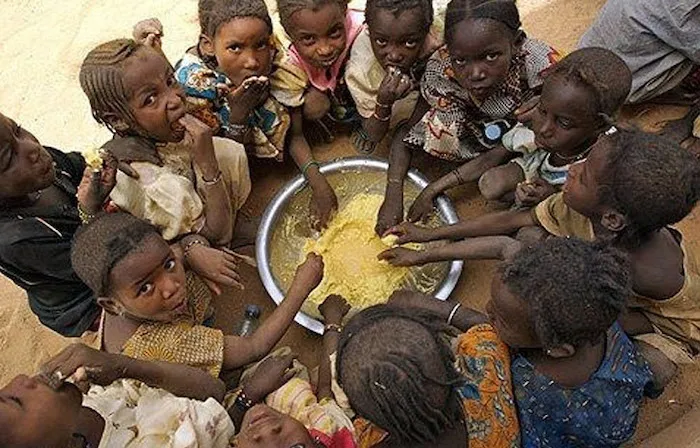Environment
CARBON FARMING AND CARBON CREDITS FOR EMISSIONS REDUCTION IN NIGERIA

CARBON FARMING AND CARBON CREDITS FOR EMISSIONS REDUCTION IN NIGERIA
By Desmond Dogara, Bardeson
The increased amount of carbon dioxide (CO2) in the atmosphere from human activity is the primary driver of climate change. In a rapidly changing world, the priority for the agricultural sector is to feed more people. At the same time, the sector is transforming itself by adapting to climate change, or even mitigating it, through a variety of different measures: the reduction of greenhouse gas (GHG) emissions, the storage of carbon in soil, and energy production.
Certain agricultural management practices release soil-stored carbon into the atmosphere. Agricultural management systems emit one-third of total anthropogenic greenhouse gas emissions. Emissions are generated within the farm gate, by crop and livestock production activities; from land-use change dynamics, linked, for instance, to deforestation and peatland degradation to make room for agriculture; and in pre- and post-production processes, such as food manufacturing, retail, household consumption, and food disposal.
This analysis focuses on results relative to the period 2000–2020. In 2020, global agrifood system emissions were 16 billion metric tonnes of carbon dioxide equivalent (Gt CO2eq), an increase of 9 percent since 2000. Tillage stimulates biological processes in the soil by introducing more oxygen and increasing the exposed surface area of carbon-storing compounds in the soil. This speeds up the breakdown and emission of that carbon dioxide.
Carbon emissions are also greatly influenced by destructive land use techniques like deforestation, the careless application of fertilizers, and the improper management of livestock. On the other hand, there are practices that help to build up carbon reserves in the soil. Perennial crops that establish deep root systems deposit carbon in various layers of the soil. Cover crops grown between cash crops and crop residues returned to the soil can both lead to carbon additions in the soil, for example.
Given the vast reservoirs of carbon in the soil, and its ability to store carbon over time, there is a lot of excitement about the potential for certain land management practices like no-till and cover crops to generate carbon offsets.
From 2015 to 2021, Nigeria accounted for 2% of global agricultural emissions, about 66.6 metric tonnes during the period. Other greenhouse gases produced during the period were methane (CH4) and nitrous oxide (N20). Methane accounted for 20.3 metric tonnes, accounted for about 2% of global agricultural emissions for this period, while Nitrous oxide accounted for 0.63 metric tonnes and accounted for 1.6% of global agricultural emissions. An analysis of the emissions trend for the seven years (2015 to 2021) reveals that, in recent years (2019–2021), carbon emissions from the agricultural sector in Nigeria have decreased compared to previous years.
These emissions are, however, from cropland fires alone. Cropland fires are emissions caused by burning local agricultural waste. The carbon sink related to vegetation regrowth is excluded from the emissions, making the emissions gross (as opposed to net).The environmental and human costs of cropland fires far outweigh the near-term economic benefits for farmers. Responsible for more than a third of all black carbon emissions, open burning is the single largest source of black carbon, a short-lived climate pollutant that contributes to air pollution, climate change, and increased melting in the cryosphere (regions of snow and ice).
Cropland fire also represents one of the largest causes of air pollution-related illnesses and deaths after cookstoves. Over time, the repeated practice of open burning becomes costly to farmers. Successive fires destroy the organic matter that makes soil fertile, causing crop yields to decrease over time and increasing the need for costly fertilizers. Smoke and spreading flames also pose a risk to neighbouring communities, buildings, and fields.
Crop stubble burning in Nigeria is responsible for regional-scale air pollution events and damage to sensitive wild ecosystems. Black carbon from burning has also been cited by the International Panel on Climate Change as a source of rain disturbance and patterns over West Africa (IPCC AR5, 2013). To scale up and accelerate short-lived climate pollutant reductions, Nigeria prepared a National Action Plan in which emission abatement strategies in the agriculture sector are a key focus. This includes reducing the open burning of agricultural waste. Agriculture residues can be a valuable resource worth saving.
Crop stubble can be used as an energy source when converted into pellets, and straw can be used in livestock feed or bedding. Yet, cropland fires are not a sustainable way to persistently reduce carbon emissions in Nigeria. Instead, the country must look to carbon farming. Carbon farming refers to agricultural practices and land management techniques that aim to sequester carbon dioxide (CO2) from the atmosphere and store it in the soil and plants. These practices include activities like reforestation, afforestation, conservation tillage, cover cropping, and rotational grazing. The agricultural sector’s carbon sink possibilities will increase with the use of proper land use techniques, like agroforestry.
Climate-smart technologies can also be used for climate change mitigation. These steps in emissions
mitigation form part of the Nigerian government’s 2050 long-term low emissions vision. Although carbon farming is beneficial for climate mitigation in the agriculture sector, large amounts of resources and time are needed to conduct carbon farming activities like reforestation and conservation tillage. Farmers, communities and other agriculture players need incentives and resources to carry these out. Carbon credits are a potential solution to this problem.
Carbon credits are tradable units representing a reduction or removal of greenhouse gas emissions, including CO2. Africa Carbon Markets Initiative (ACMI) estimated that Nigeria itself could generate as many as 30 million carbon credits every year by 2030. Using a price of $20 per credit, the country’s voluntary Carbon Market will be worth over half a billion dollars per year.
According to ACMI’s estimates: At this level of production, the industry could potentially support over 3 million Nigerian jobs. And since Nigeria has only a portion of Africa’s total potential, the impact for the continent as a whole could be far greater. Part of this vision is the nation’s goal to pioneer climate solutions that will benefit the continent and the world. And one key solution is the generation and sale of carbon credits.
This financial instrument offers Africa great potential to be explored. Nigeria’s carbon credit potential will come
mostly from the forestry/agricultural sectors and household devices. Projects in both sectors deliver significant climate benefits.
For instance, carbon credits from clean cookstoves and solar lamps help expand access to clean energy and improve health outcomes. Likewise, forestry carbon credits will help conserve the nation’s rich biodiversity and support sustainable livelihoods.
BENEFITS OF CARBON FARMING
The benefit of carbon farming on carbon credits lies in its potential to generate carbon offsets, which can be sold or traded on the carbon market. Although carbon farming is beneficial for climate mitigation in the agriculture sector, large amounts of resources and time are needed to conduct carbon farming activities like reforestation and conservation tillage. Farmers, communities, and other agriculture players need incentives and resources to carry these out. Carbon credits are a potential solution to this problem.”
Here are some key benefits:
1. Carbon sequestration: Carbon farming practices enhance the uptake of atmospheric CO2 by plants and promote its storage in soil organic matter. This sequestration process helps mitigate climate change by reducing the concentration of CO2 in the atmosphere. Carbon farming contributes to global efforts to mitigate climate change by reducing greenhouse gas emissions. It helps offset emissions from other sectors such as energy, transportation, and industry, effectively balancing the carbon budget and moving towards a net-zero or even carbon-negative future.
2. Offset generation: Carbon farming projects can generate carbon offsets by quantifying the amount of CO2 sequestered or emissions reduced. These offsets can be converted into carbon credits, which have financial value when traded on carbon markets.
3. Source of income: By participating in carbon farming and selling carbon credits, farmers can diversify their income streams. This provides an economic incentive for implementing sustainable land management practices and adopting regenerative agricultural techniques.
4. Ecosystem co-benefits: Carbon farming practices often have co-benefits for biodiversity conservation, soil health, water quality, and ecosystem resilience. By adopting these practices, farmers can improve soil fertility, reduce erosion, enhance water infiltration, and create habitats for wildlife.
5. Sustainable agriculture: Carbon farming promotes sustainable agricultural practices that prioritize long-term soil health, crop productivity, and ecosystem sustainability. It encourages farmers to adopt regenerative practices that enhance soil organic matter, improve soil structure, and reduce the need for synthetic fertilizers and pesticides.
6. Climate finance opportunities: Carbon credits generated from carbon farming can attract climate finance investments, including private sector funding, government incentives, and international climate funds. These financial resources can support the scaling up of carbon farming initiatives and incentivize widespread adoption.
Overall, carbon farming provides an opportunity for farmers to actively participate in climate change mitigation efforts, generate additional income, and contribute to the sustainable development of agricultural systems. By connecting carbon farming practices to carbon credits, it enables the quantification and monetization of carbon sequestration and emission reductions, driving the transition towards a low-carbon economy.
Environment
National Park advocates carbon reduction for climate action

The National Park Service (NPS) has assured Nigerians of its ongoing efforts to mitigate climate change through carbon reduction.
Dr Ibrahim Goni, the Conservator-General (C-G) of the NPS, made this commitment in an interview with the News Agency of Nigeria (NAN) in Abuja on Wednesday.
The C-G stated that the approval for the establishment of 10 new national parks in the country would contribute to carbon reduction.
“The seven national parks provide a total area of vegetation of 20,000 square kilometres, and we are confident that it would sequestrate carbon by 4.8 million parts.
“This means that with the introduction of the new 10 national parks, carbon dioxide is going to be sequestrated”.
Goni further advised residents to engage in afforestation to reclaim lands that have been degraded due to erosion.
He commended the Federal Government for its efforts in carbon mediation and for planting 25 million trees to cushion the effects of climate change in the country.
Goni also expressed satisfaction with the federal government’s tree-planting efforts, describing it as a huge step towards conserving the country’s natural resources.
“In 2020, the federal government approved the establishment of 10 new national parks”.
NAN reports that the 10 new national parks are located in Alawa National Park in Niger, Apoi and Edumenun National Parks in Bayelsa, Galgore National Park in Kano state, and Hadejia Wetland National Park in Jigawa.
Others are Kampe National Park in Kwara, Kogo National Park in Katsina, Marhi National Park in Nasarawa state, Oba Hill National Park in Osun and Pandam National Park in Plateau.
Environment
FG unveils national environmental battery control regulations

The Federal Government has unveiled the National Environmental (Battery Control) Regulations 2024 to prevent and minimise pollution and waste emanating from batteries in Nigeria.
The News Agency of Nigeria (NAN) reports that the regulations seek to ensure environmentally sound management of used batteries in the country.
The Minister of Environment, Balarabe Lawal, stated this at the unveiling of the document on Thursday in Abuja.
He said that the regulations also sought to address the challenges of waste battery management in Nigeria.
Lawal said it was in line with the provisions and recommendations of the Basel and Bamako Conventions, and other related guidelines for the Environmentally Sound Management (ESM) of hazardous waste.
The minister was represented by Mr Usman Bokani, Director, Pollution and Public Health, National Environmental Standards and Regulations Enforcement Agency (NESREA).
He said that batteries, particularly those used in renewable energy, telecommunication and automotive sectors, were critical to Nigeria’s economic development.
Lawal said that batteries contained hazardous materials such as lead, mercury, cadmium, and lithium amongst others.
He said batteries when improperly disposed of, could lead to severe health conditions including cancer, kidney damage and neurological disorders.
Environment
NiMet forecasts 3-day sunshine, haziness from Monday

NiMet forecasts 3-day sunshine, haziness from Monday
The Nigerian Meteorological Agency (NiMet) has predicted sunshine and haziness from Monday to Wednesday across the country.
NiMet’s weather outlook released on Sunday in Abuja forecasts sunny and hazy conditions on Monday over parts of Yobe, Jigawa, Kano and Katsina states throughout the forecast period with chances of morning thunderstorms over parts of Taraba state.
“However, localised thunderstorms are expected over parts of Kaduna, Bauchi, Zamfara, Kebbi and Taraba states.
“Cloud patches with sunshine intervals are expected over the North Central region with chances of localised thunderstorms over parts of the Federal Capital Territory, Kwara, Benue and Kogi states during the morning hours.
“In the afternoon/evening period, localised thunderstorms are anticipated over parts of the Federal Capital Territory, Plateau, Nasarawa, Benue, Kogi, Kwara and Niger states,” it said.
The agency envisaged cloudy skies with intervals of sunshine over the Inland states of the South and the Coast.
It anticipated chances of localised thunderstorms over parts of Ogun, Oyo, Edo, Delta, Bayelsa, Cross River and Akwa Ibom states during the morning hours.
NiMet predicted localised thunderstorms over parts of Imo, Abia, Ondo, Osun, Ekiti, Oyo, Rivers, Edo, Cross River, Akwa Ibom, Lagos, Bayelsa, Rivers and Delta states later in the day.
According to him, sunny skies with few patches of cloud are anticipated over the northern region during the morning hours on Tuesday.
“Later in the day, localised thunderstorms are expected over parts of Kaduna, Taraba, Zamfara and Kebbi states. The North Central region is expected to be cloudy with sunshine intervals.
“Also, with chances of localised thunderstorms over parts of Kogi, Nasarawa, Benue and the Federal Capital Territory during the morning hours,” it said.
NiMet predicted localised thunderstorms over parts of Kogi, Plateau, the Federal Capital Territory, Niger, Kwara, Benue and Nasarawa states later in the day.
It anticipated cloudy skies with intervals of sunshine over the Inland of the South and the Coast with chances of isolated thunderstorms over parts of Enugu, Imo, Anambra, Ebonyi, Rivers, Cross River and Akwa Ibom states in the morning hours.
It forecast localised thunderstorms over parts of Imo, Abia, Enugu, Anambra, Edo, Ondo, Oyo, Osun, Ogun, Ekiti, Delta, Rivers, Cross River, Akwa Ibom, Bayelsa and Lagos
states.
The agency envisaged a sunny atmosphere with patches of cloud over the northern region during the morning hours on Wednesday.
“Later in the day, localised thunderstorms are expected over parts of Taraba and Kaduna states. Cloudy skies with intervals of sunshine are expected over the North Central region during the morning hours.
“In the afternoon/evening period, localised thunderstorms are anticipated over parts of the Federal Capital Territory, Nasarawa, Plateau and Niger states. A cloudy atmosphere is expected over the southern region during the morning hours.
“Later in the day, thunderstorms are expected over the entire region,” it said.
NiMet urged the public to take adequate precautions as strong winds might precede the rains in areas where thunderstorms were likely to occur.
The agency advised the Airline operators to get updated weather reports and forecasts from NiMet for effective planning in their operations.
(NAN)
-

 Headlines4 years ago
Headlines4 years agoFacebook, Instagram Temporarily Allow Posts on Ukraine War Calling for Violence Against Invading Russians or Putin’s Death
-

 Headlines4 years ago
Headlines4 years agoNigeria, Other West African Countries Facing Worst Food Crisis in 10 Years, Aid Groups Say
-

 Foreign4 years ago
Foreign4 years agoNew York Consulate installs machines for 10-year passport
-

 News1 year ago
News1 year agoZero Trust Architecture in a Remote World: Securing the New Normal
-

 Entertainment3 years ago
Entertainment3 years agoPhyna emerges winner of Big Brother Naija Season 7
-

 Headlines1 year ago
Headlines1 year agoNigeria Customs modernisation project to check extortion of traders
-

 Entertainment2 years ago
Entertainment2 years agoMovie download platform, Netnaija, announces closure
-

 Economy2 years ago
Economy2 years agoWe generated N30.2 bn revenue in three months – Kano NCS Comptroller







